Contents
- Early History
- Colonial History
- Early Institutions for Higher Learning
- Elphinstone College
- Wilson College
- University of Mumbai
- St. Xavier’s College
- Sophia College for Women
- Ramnarain Ruia College
- Local Figures & Organizations
- Maharshi Karve
- Sir Jamsetjee Jeejeebhoy
- Post-Independence Era and Contemporary Educational Infrastructure
- Primary & Secondary Education
- Institutions of Higher Learning
- Jai Hind College
- KC College
- Homi Bhabha State University
- HSNC University
- Graphs
- Enrollment and Dropout Rate
- A. Student Enrollment Numbers
- B. Student Enrollment (Class-Wise)
- C. Student Enrollment (Gender-Wise)
- D. Student Enrollment (By School Management Type)
- E. Drop Out Rate (By Schooling Level)
- F. Drop Out Rate (By Gender)
- Schools
- A. No. of Schools
- B. No. of Schools (Filtered by Gender Mix)
- C. No. of Schools (By School Management Type)
- Teachers
- A. No. of Teachers
- B. No. of Teachers (By School Management Type)
- C. No. of Teachers (Male vs Female)
- D. Education Level of Teachers
- Sources
MUMBAI
Education
Last updated on 6 November 2025. Help us improve the information on this page by clicking on suggest edits or writing to us.
The educational framework of Mumbai City aligns with the broader structure of the Indian education system, encompassing pre-primary, primary, secondary, and higher education. The story of how this system developed is quite interesting. In the 19th and 20th centuries, Mumbai became an important place for education and scientific research, just like other major cities under British rule at the time.
By the 19th century, Western-style education had begun to change how people in Mumbai thought about schools and learning. British officials and missionaries played a big part in setting up schools and colleges. This influence shaped much of what the city’s education system looks like today. However, it wasn’t only colonial powers that shaped education. In the early 20th century, local communities started to take a more active role. This local effort continued to grow after independence and still has an impact on Mumbai’s schools and colleges today.
Early History
The earliest clear records of education in Mumbai date back to the 19th century. Before this time, information about schools is limited, though this does not mean that learning was entirely absent. As in other parts of Maharashtra, it may be presumed that certain traditional modes of instruction and knowledge transmission were in practice in earlier times.
Colonial History
The development of education infrastructure in Mumbai City unfolded gradually, shaped by administrative changes, local initiatives, and the sustained influence of missionary organisations. Its beginnings are closely linked with the early expansion of British authority. In 1661, the islands which now form the city were transferred to the British Crown as part of the dowry of Catherine of Braganza, and in 1668 were leased to the East India Company for a nominal rent.
Under the Company’s administration, Mumbai evolved from a modest trading post into a significant port and urban centre. With this steady expansion of trade and governance, perhaps the demand for formal education naturally increased. The first recorded attempts at organised instruction arose under the influence of Christian missionaries. By the close of the sixteenth century, parochial schools were established in connection with church missions who provided elementary education, chiefly for converts and children of European residents.
In the early nineteenth century, British officials and missionary societies played a larger role in shaping what education looked like in the City. In 1815, European settlers founded the Bombay Education Society, mainly to provide schooling for European and Anglo-Indian children. Change came with Mountstuart Elphinstone, then Governor of Bombay, recognised these gaps and supported the creation of the Bombay Native School and School Book Society in 1827.
Under the leadership of the Bombay Native Education Society, significant advancements were made in education. The society established a central school in 1824, which eventually evolved into Elphinstone High School and, subsequently, the famous Elphinstone College, two of the oldest educational institutions in the state.
Early Institutions for Higher Learning
Elphinstone College
One notable aspect of Mumbai City’s educational history is its early emphasis on higher education. Among the institutions established during this period, Elphinstone College is recognised as one of the city’s earliest centres for higher learning. It was formally established in 1835 and named after Mountstuart Elphinstone, who served as Governor of Bombay Presidency and played a pivotal role in the spread of Western education in India. Initially, the college operated alongside its high school section until 1856, when it became an independent degree college. When the University of Bombay (now the University of Mumbai) was founded in 1857, Elphinstone College was among its first affiliated institutions.
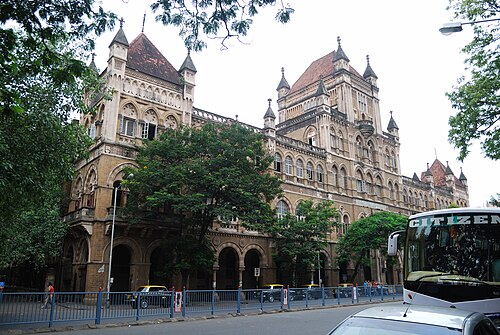
Throughout the late 19th and early 20th centuries, the college produced many notable alumni who contributed to India’s public life and independence movement. Among them were Dr B.R. Ambedkar, principal architect of the Indian Constitution; Dadabhai Naoroji, the first Asian member of the British Parliament; freedom leader Bal Gangadhar Tilak; and industrialist Jamsetji Tata.
Wilson College
Wilson College is one of Mumbai’s oldest educational institutions. The college traces its origins to 1832, when the Scottish missionary Rev. John Wilson founded the Ambroli English School, which soon evolved into a formal collegiate institution. By 1836, the college was formally established and became an early centre for higher education in the Bombay Presidency.
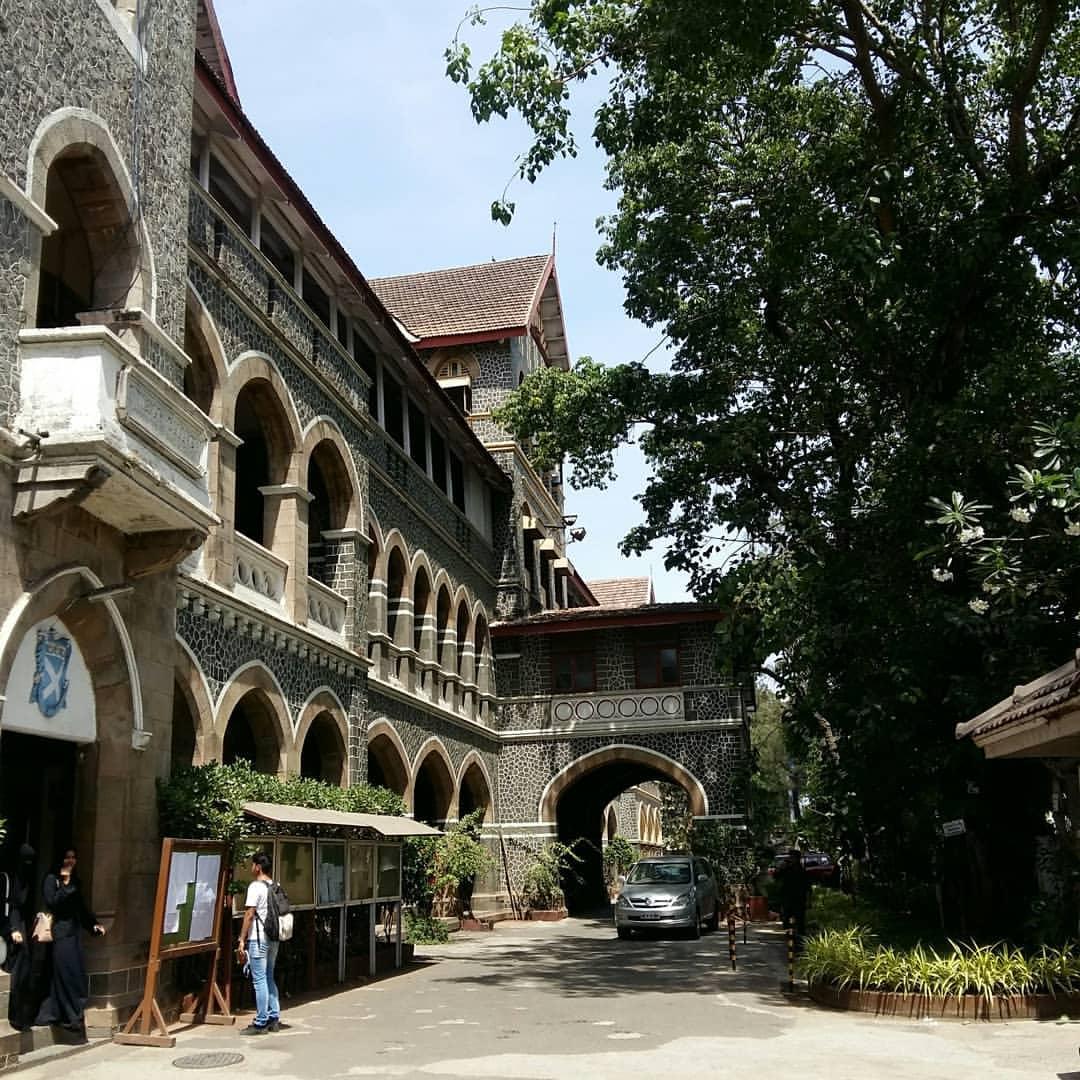
Wilson College operated under the Free Church of Scotland and became the first private, non-government college to affiliate with the University of Bombay (now the University of Mumbai) in 1861. The college’s iconic main building, completed in 1889, remains a landmark of Victorian Gothic architecture along Girgaon Chowpatty in South Mumbai.
University of Mumbai
Perhaps the most significant development in Mumbai’s educational history came with the formation of the University of Mumbai. Established in 1857 as the University of Bombay, it is one of India’s oldest universities and the first in the state of Maharashtra. Its creation was influenced by Charles Wood’s Dispatch of 1854, which laid out a vision for a structured system of Western-style higher education across British India.

Interestingly, when first established, the university did not conduct teaching directly but functioned mainly as an examining body for its affiliated colleges. By 1860, its earliest affiliates included Elphinstone College, Grant Medical College in Mumbai, and Deccan College in Pune.
According to the district Gazetteer (1986), the Indian Universities Act of 1904, introduced under Lord Curzon, brought significant reforms to the university’s structure and operations. A new syndicate was set up to oversee university affairs, giving it greater authority over affiliated colleges and the power to offer its own teaching programmes. Government grants during this period also strengthened its finances, helping expand facilities and establish new departments, including the University School of Economics and Sociology in 1919 and various postgraduate courses soon after.
After Independence, the Bombay University Act of 1953 reshaped the university’s jurisdiction, limiting it to Greater Mumbai and giving it a clear role as both a teaching and affiliating body.
St. Xavier’s College
St. Xavier’s College was established in 1869 by Jesuit missionaries of the Society of Jesus in Mumbai and named after St. Francis Xavier.

Initially, the college offered courses in the liberal arts and sciences and became affiliated with the University of Bombay (now the University of Mumbai). Over time, it expanded its academic offerings to include a wide range of undergraduate and postgraduate programmes across arts, science, and commerce.
Sophia College for Women
Sophia College for Women is an arts and science college in Mumbai which has a particularly interesting story. The site where the college now stands was originally home to a mansion built by the Ashburner family, a prominent Parsi family. Over the years, the property changed hands multiple times and served as the summer residence of the Maharaj of Bhavnagar, who used it as a retreat during the hotter months in Gujarat.
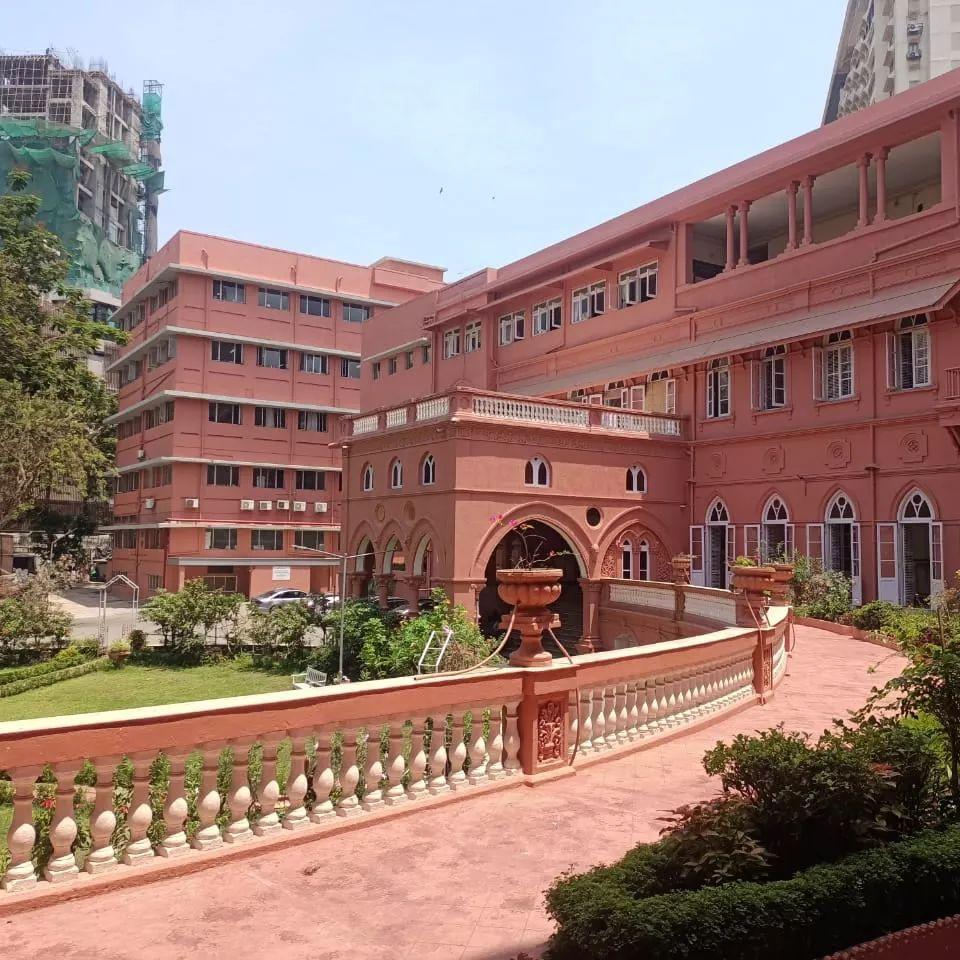
In 1940, the Society of the Sacred Heart, a Catholic religious congregation, acquired the property. The Society officially established Sophia College for Women in 1941, with the aim of providing higher education to women at a time when opportunities for them were limited. Since its founding, Sophia College has offered undergraduate and postgraduate programmes in arts, science, and social sciences.
Ramnarain Ruia College
While Western entities played a significant role in shaping Mumbai City’s educational landscape, local figures and organizations also emerged as key contributors. Among them was Ramnarain Ruia, a prominent businessman of the Bombay Presidency, who earned the nickname ‘Cotton King’ for his success in the textile trade. In 1937, the Shikshan Prasaraka Mandali (see Pune for more), an educational trust, established a college in his name.
Local Figures & Organizations
Local involvement in education was not a recent development at the time. Interestingly, it is noted in the Gazetteer (1986-87) that indigenous schools too existed in these years. Between 1820 and 1830, there was already a notable network of such schools throughout Bombay. Broadly, these institutions fell into two types: some were dedicated to the preservation of ancient sacred learning, while others provided elementary instruction in literacy and numeracy, commonly referred to as the three R’s: reading, writing, and arithmetic.
Most of these schools were small private efforts started by local teachers to meet the needs of their communities. They were funded through student fees and donations. Few had their own buildings; instead, they operated from the homes of teachers or in spaces provided by wealthy patrons. Over time, many Indian leaders and reformers established institutions that still shape education in the district today, alongside community-led organisations that have played a lasting role in its growth.
Maharshi Karve
Among some of the most influential of these reformers was Maharshi Dhondo Keshav Karve, born on 18 April 1858 in Ratnagiri. Karve was an Indian social reformer renowned for his pioneering work in the field of women’s education. He devoted his life to improving the status and opportunities available to women in India. His lifelong commitment to social reform and education earned him India’s highest civilian honour, the Bharat Ratna.
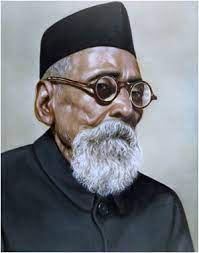
In 1916, Karve founded the Indian Women’s University in Pune, one of the first institutions in India dedicated exclusively to women’s higher education. His vision was to create educational opportunities that would enable women to become self-reliant and contribute actively to society. In 1920, following a donation of Rs. 15 lakh from Sir Vithaldas Thackersey, an industrialist from Bombay, the university was renamed Shreemati Nathibai Damodar Thackersey (SNDT) Women’s University in memory of Thackersey’s mother. The university was later relocated to Churchgate, Mumbai, in 1936.
Despite early challenges such as societal resistance, lack of formal recognition, and limited funding, the university persevered and expanded its reach. In 1951, it received statutory recognition from the Government of Bombay, which marked a major milestone in its growth. Today, SNDT Women’s University stands as a testament to Karve’s transformative legacy in promoting women’s education across India.
Sir Jamsetjee Jeejeebhoy
Sir Jamsetjee Jeejeebhoy (1783–1859) was an Indian philanthropist and merchant, notable for his contributions to civic life and public welfare in colonial India. Born into a Parsi family in Gujarat, Jeejeebhoy began his working life assisting his maternal uncle in the trade of collecting and selling empty liquor bottles. He later expanded his business interests to international trade, amassing considerable wealth over time.
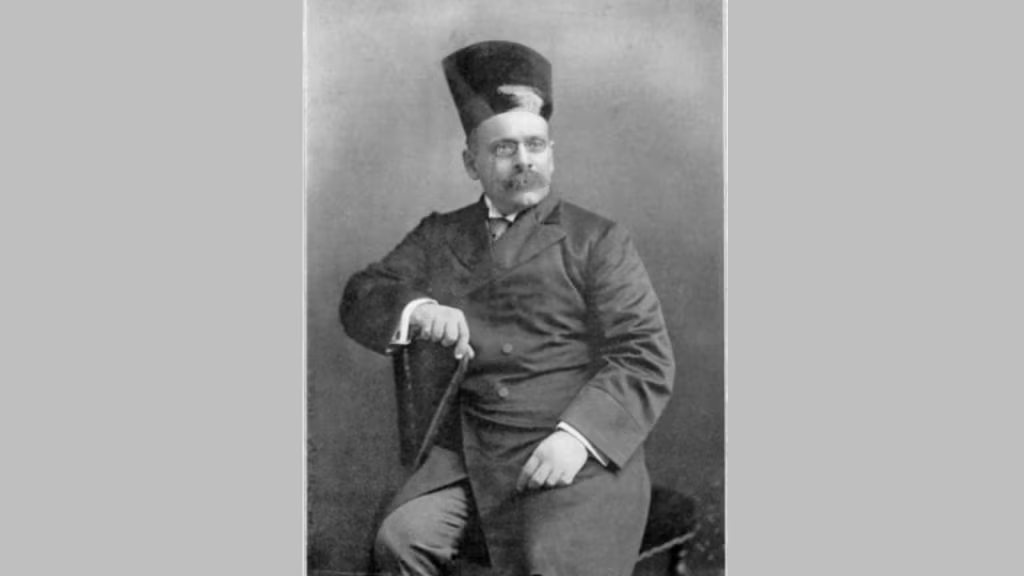
After the age of 60, Jeejeebhoy dedicated much of his fortune to philanthropic causes, supporting education, healthcare, and infrastructure. Among his many contributions was his support for the establishment of Grant Medical College in Mumbai in the 1840s. Named after Sir Robert Grant, the then Governor of Bombay, Grant Medical College was one of the earliest medical institutions in India, aimed at advancing healthcare and medical education.
Over the decades, Grant Medical College became an important centre for medical research and training. Notable scientific work conducted there includes V. M. Haffkine’s development of the plague vaccine in 1896 at the F.D. Petit Laboratory (today’s pharmacology lecture hall). In 1902, renowned German microbiologist Robert Koch also carried out research on Vibrio cholerae in the college premises. It is, notably, regarded by many to be a significant hub for biomedical research in India.
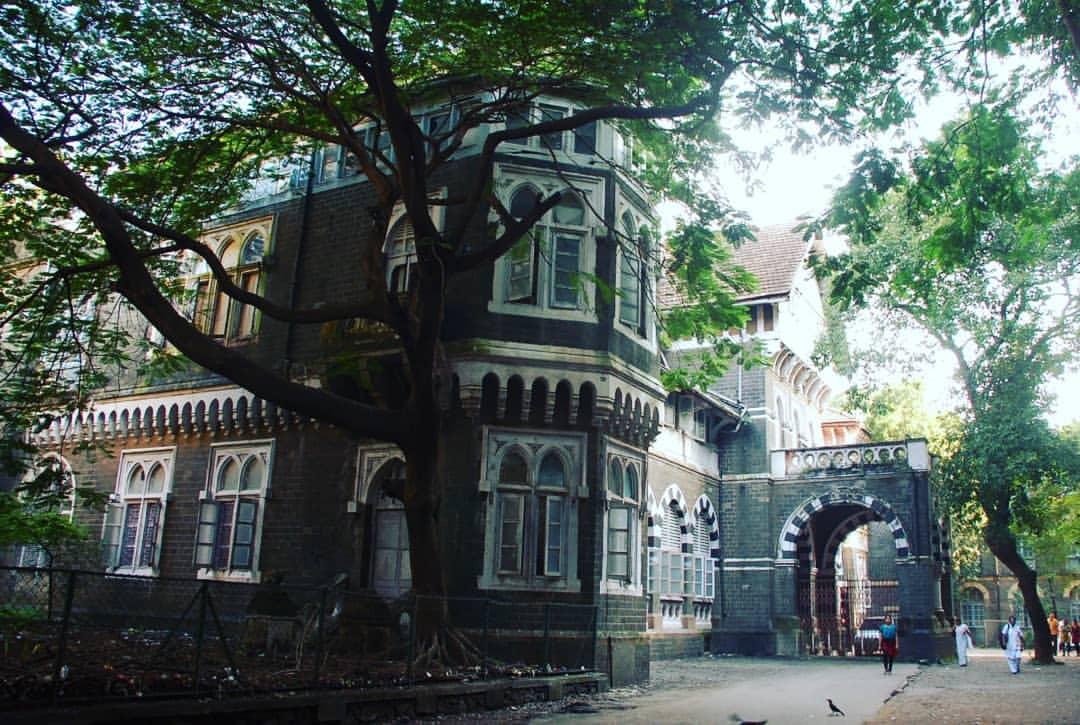
Post-Independence Era and Contemporary Educational Infrastructure
Following India's independence, the education system in the district underwent major transformations, driven by both state policies and local leadership. The introduction of structured education levels—pre-primary, primary, secondary, and higher education—along with the implementation of National Education Policies, heavily shaped Mumbai’s educational landscape. Over the years, the sector expanded with contributions from both government-funded institutions and private organizations. Additionally, the introduction of various educational boards, each offering distinct curricula and standards, provided students with more choices and opportunities.
Primary & Secondary Education
Basic infrastructure for primary and secondary education has existed in Mumbai City for many years, but its growth has been shaped by rising enrollment and active involvement from local communities, educators, and reformers. Schools are now spread across the district’s various wards and neighbourhoods, reflecting steady expansion and improved access.

Over time, institutions affiliated with various educational boards also emerged. Notably, Mumbai City remains one of the few places in Maharashtra where schools operate under a range of boards, including state-run boards like the SSC, as well as national boards such as the CBSE, ICSE, and international boards such as IB and IGCSE, providing students with multiple options for formal education.
Institutions of Higher Learning
Over time, Mumbai City also became home to a wide range of higher education institutions, from fully public universities to private, semi-private, and autonomous colleges run by trusts, community boards, and religious organisations. These institutions have played a significant role in shaping the city’s educational landscape and continue to attract students from across India and abroad.
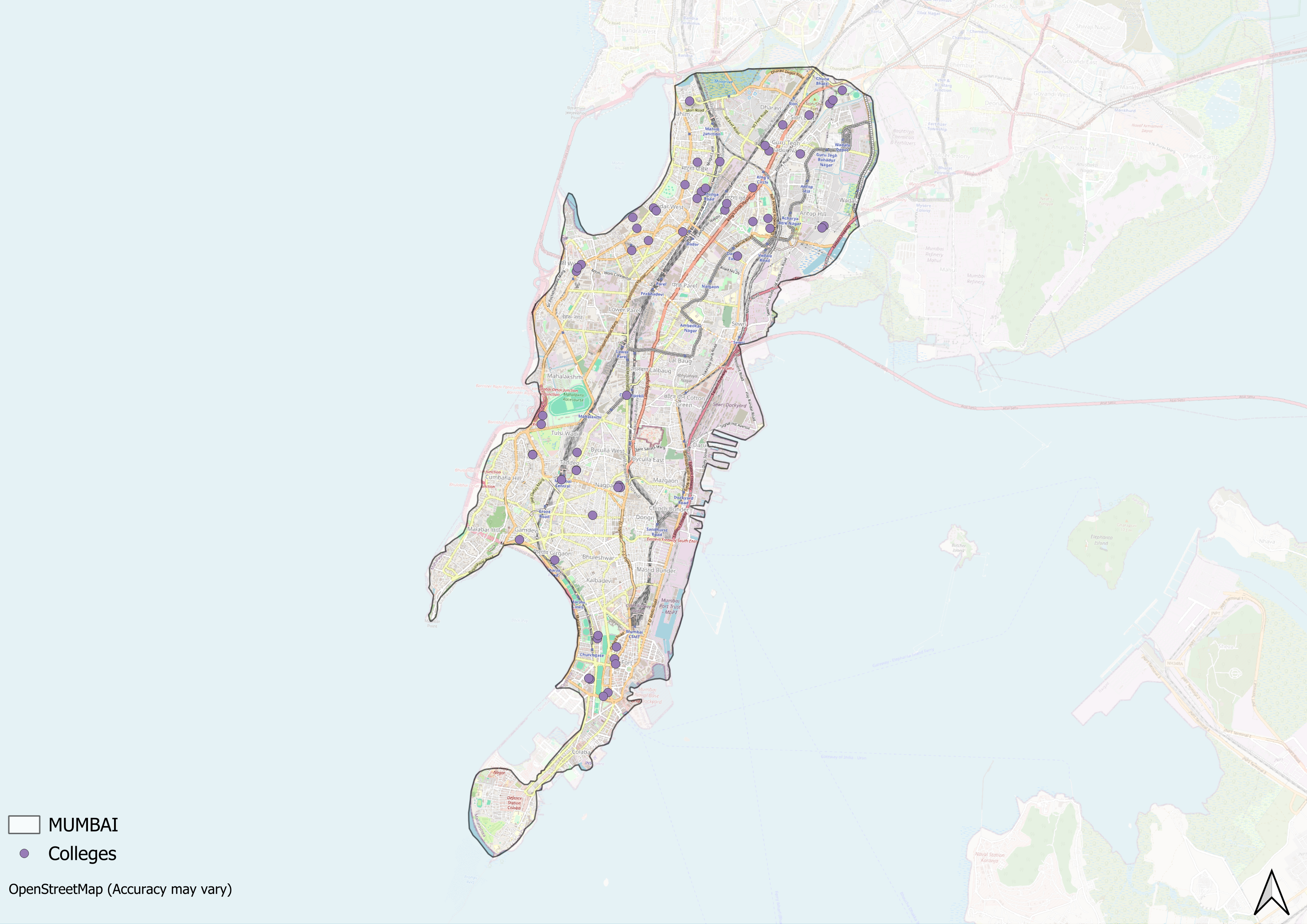
Jai Hind College
Jai Hind College was established in the aftermath of the Partition of India in 1947. Following their displacement from Karachi, a group of professors from D.J. Sind College came together to address the educational needs of the displaced Sindhi community. They formed the Sind Educationists’ Association with the aim of creating a new institution in Mumbai.

The college began operations in a modest two-room facility, initially offering courses in Arts. It expanded its academic offerings over time, adding Science in 1949 and Commerce in 1980. Today, Jai Hind College is a prominent institution in Mumbai, providing undergraduate and postgraduate programs in Arts, Science, Commerce, Management, and Information Technology (IT).
KC College
Kishinchand Chellaram College, popularly known as KC College, is located in Churchgate, Mumbai. It was founded by the Hyderabad (Sind) National Collegiate Board (HSNC Board) as one of its first institutions in the city, also in response to the Partition and the migration of the Sindhi community. The college is affiliated with HSNC University and was notably the first in Mumbai to receive an “A” grade from the National Assessment and Accreditation Council (NAAC). Today, KC College remains a significant autonomous institution, offering a range of academic programs.
Homi Bhabha State University
Dr. Homi Bhabha State University was established in 2019 by the Government of Maharashtra as the state’s first Cluster University under the Rashtriya Uchchatar Shiksha Abhiyan (RUSA) framework. The university brings together four historic institutions in Mumbai, with the Institute of Science (founded in 1920) serving as the Lead Institute and Elphinstone College (established in 1835) as the oldest constituent college.
The creation of Dr. Homi Bhabha State University provided these institutions with a unified administrative structure and greater academic autonomy. As an independent degree-granting body, the university aims to modernise higher education in the state and offer students a flexible and dynamic learning environment.
HSNC University
HSNC University is another Cluster University established in Mumbai under the RUSA initiative. Established in 2020, it was formed through collaboration between the Ministry of Human Resource Development, the Government of Maharashtra, and the Hyderabad (Sind) National Collegiate Board (HSNC Board), one of Mumbai’s largest educational trusts serving the Sindhi community since the Partition.
The university clusters together three renowned colleges: Kishinchand Chellaram College (KC College), H.R. College of Commerce and Economics, and Bombay Teachers’ Training College. This model allows the colleges to share resources, develop interdisciplinary courses, and gain autonomy in designing curricula that respond to contemporary educational needs and global standards.
Graphs
Enrollment and Dropout Rate
Schools
Teachers
Sources
Akshay Chavan. 2018. "Mumbai’s Hidden History." Peepul Tree.https://www.peepultree.world/livehistoryindi…
B. Arunachalam, et al. 1986-87.Maharashtra State Gazetteers: Greater Bombay District.Vol. I, II, III. Gazetteers Department, Govt of Maharashtra. Mumbai.
CNBCTV18. 2022. "Jamsetjee Jeejeebhoy’s Birth Anniversary: India’s Original Philanthropist Who Made His Millions in Opium Trading."CNBC TV18https://www.cnbctv18.com/india/jamsetjee-jee…
Dr. Homi Bhabha State University. About the University.https://hbsu.ac.in/page/137/dr-homi-bhabha-s…
Grant Government Medical College & Sir J.J. Group of Hospitals. “History.”Grant Government Medical College & Sir J.J. Group of Hospitals.https://ggmcjjh.com/history/
Hindustan Times,Oindrilla Gupta. 2016. "Insider’s Guide to Sophia College."Hindustan Times, Mumbai.https://www.hindustantimes.com/more-lifestyl…
HSNC University. About the University.https://www.hsncu.edu.in/about-university.as…
Jai Hind College. History & Legacy.https://www.jaihindcollege.com/about/legacy/…
Maharashtra State Gazetteers. 1974. Greater Bombay District: Education. Directorate of Government Printing, Stationery & Publications, Government of Maharashtra, Mumbai.
Ramnarain Ruia Autonomous College. 2022. “History of Ruia College”.Ramnarain Ruia Autonomous College.https://www.ruiacollege.edu/UserPanel/Displa…
S. M. Edwardes, et al. 1909. Gazetteer of the Bombay Presidency: Bombay City and Island.Vol. I, II, III. Bombay.
Last updated on 6 November 2025. Help us improve the information on this page by clicking on suggest edits or writing to us.